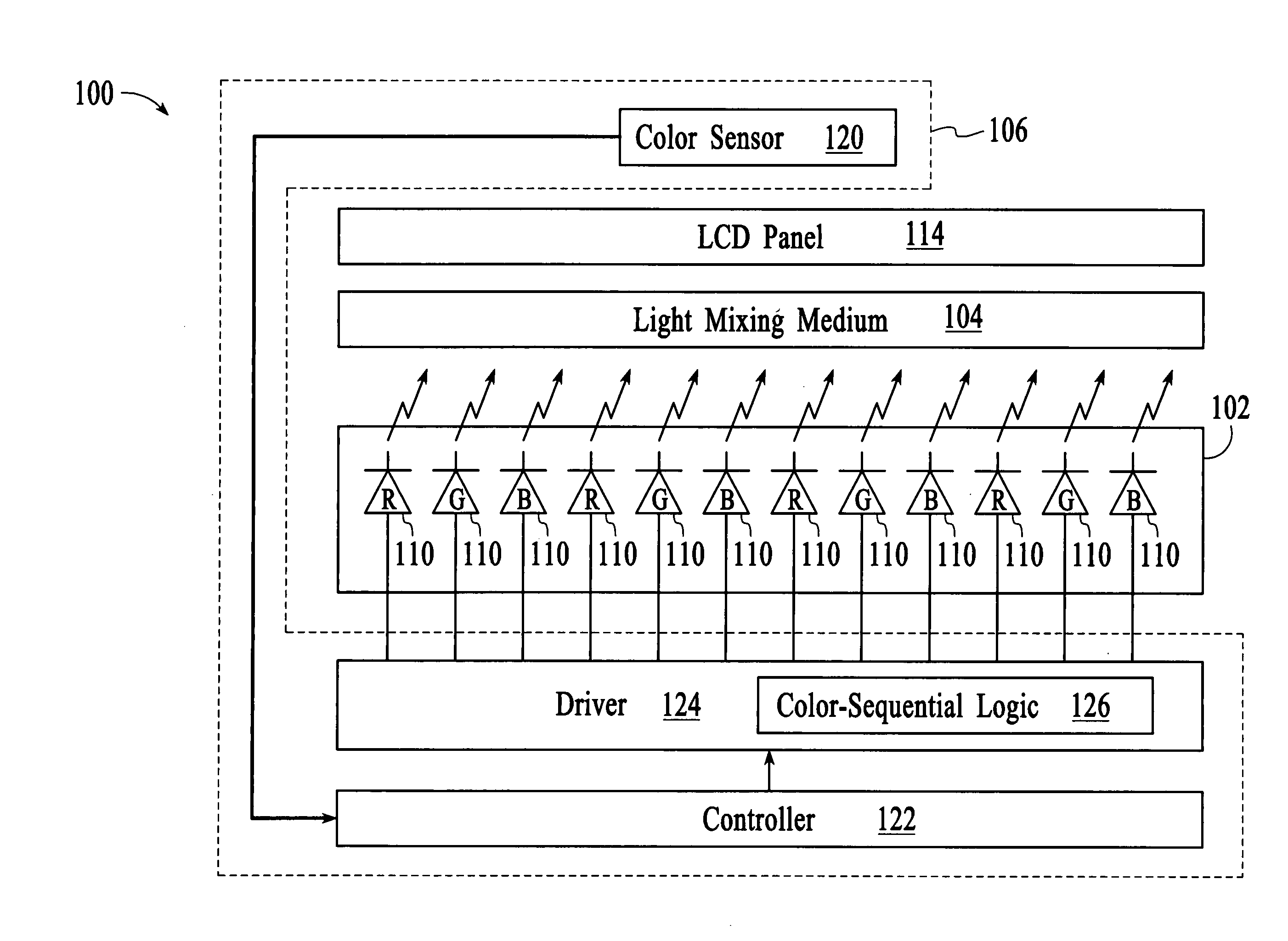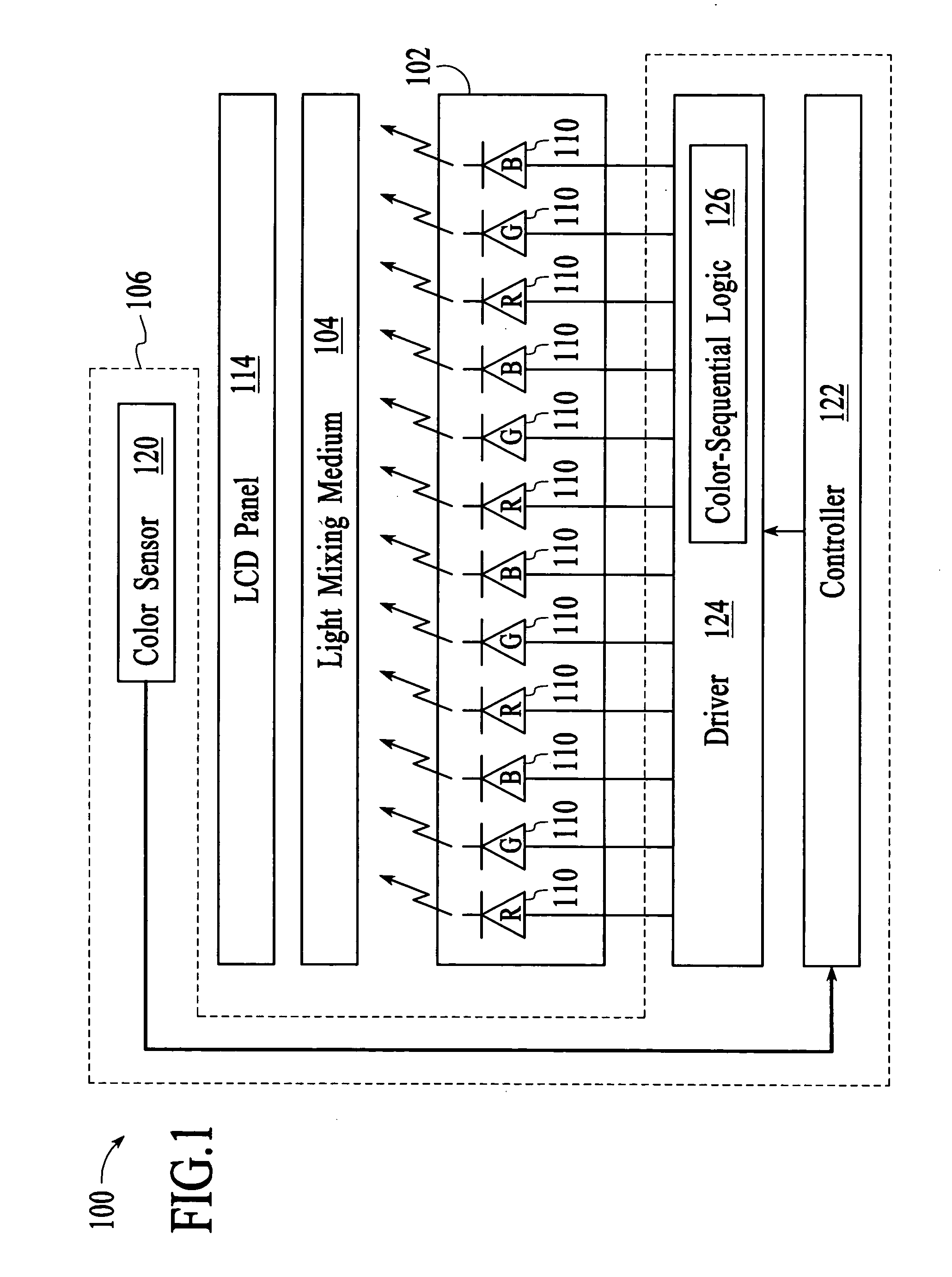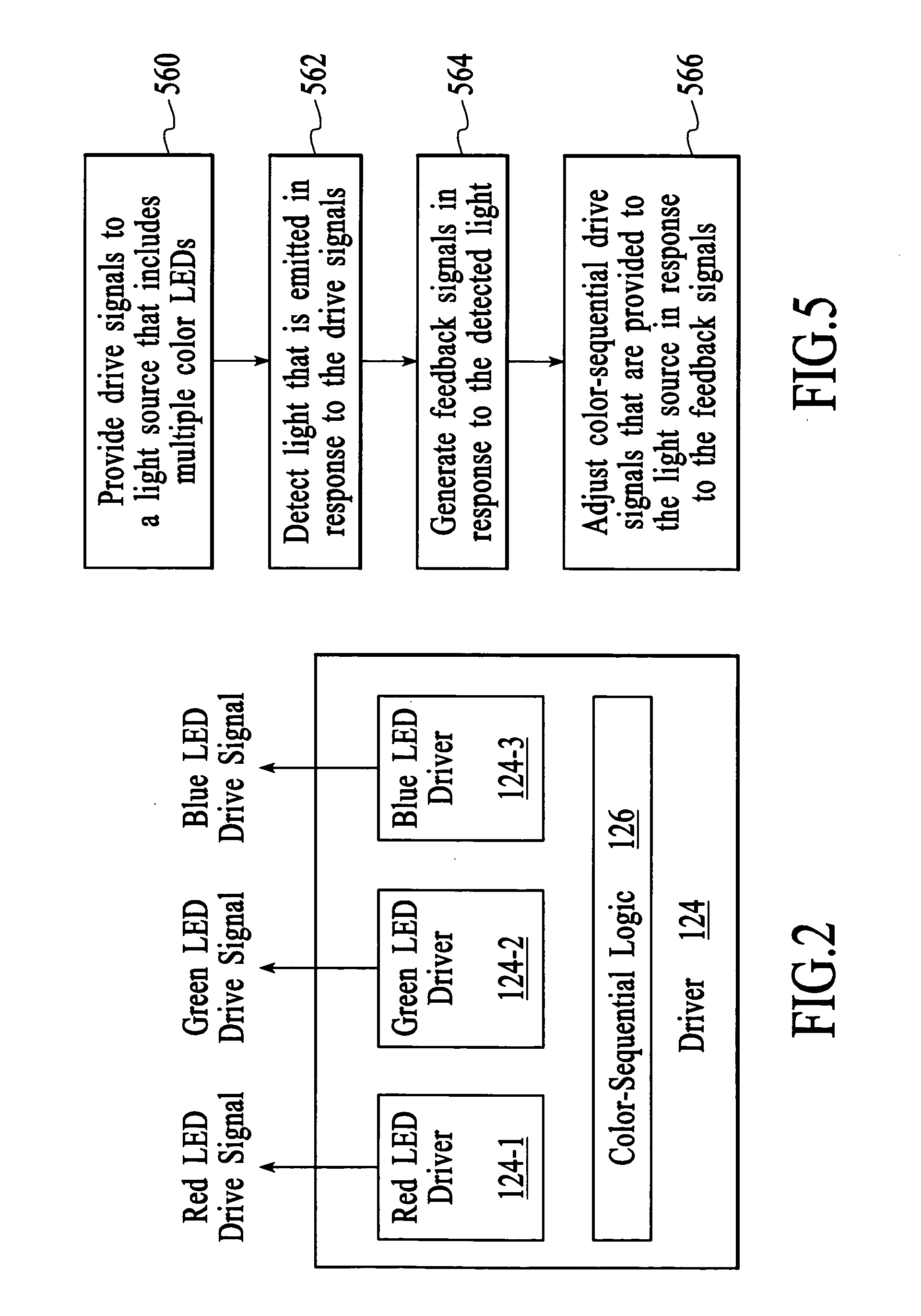Field-sequential color display with feedback control
a color display and field-sequential technology, applied in static indicating devices, instruments, optics, etc., can solve the problems of varying luminance and chrominance characteristics of color leds
- Summary
- Abstract
- Description
- Claims
- Application Information
AI Technical Summary
Benefits of technology
Problems solved by technology
Method used
Image
Examples
Embodiment Construction
[0015]FIG. 1 depicts a field-sequential color (FSC) light system 100 that can be used, for example, as a backlight for a liquid crystal display (LCD) panel 114. The FSC light system includes a light source 102, a light mixing medium 104, and a spectral feedback control system 106.
[0016] The light source 102 is configured to generate light in response to applied drive signals. The light source is oriented with respect to the light mixing medium 104 such that light emitted from the light source passes through the light mixing medium. The light source depicted in FIG. 1 is made up of multiple light emitting diodes (LEDs) 110 that emit monochromatic light of a particular color (referred to herein as “color LEDs”). In the embodiment of FIG. 1, the color LEDs include a mix of red (R), green (G), and blue (B) LEDs that emit monochromatic colored light in the respective red, green, and blue spectrums. Color LEDs are well known in the field of LEDs. Although the color LEDs in the example em...
PUM
 Login to View More
Login to View More Abstract
Description
Claims
Application Information
 Login to View More
Login to View More - R&D
- Intellectual Property
- Life Sciences
- Materials
- Tech Scout
- Unparalleled Data Quality
- Higher Quality Content
- 60% Fewer Hallucinations
Browse by: Latest US Patents, China's latest patents, Technical Efficacy Thesaurus, Application Domain, Technology Topic, Popular Technical Reports.
© 2025 PatSnap. All rights reserved.Legal|Privacy policy|Modern Slavery Act Transparency Statement|Sitemap|About US| Contact US: help@patsnap.com



